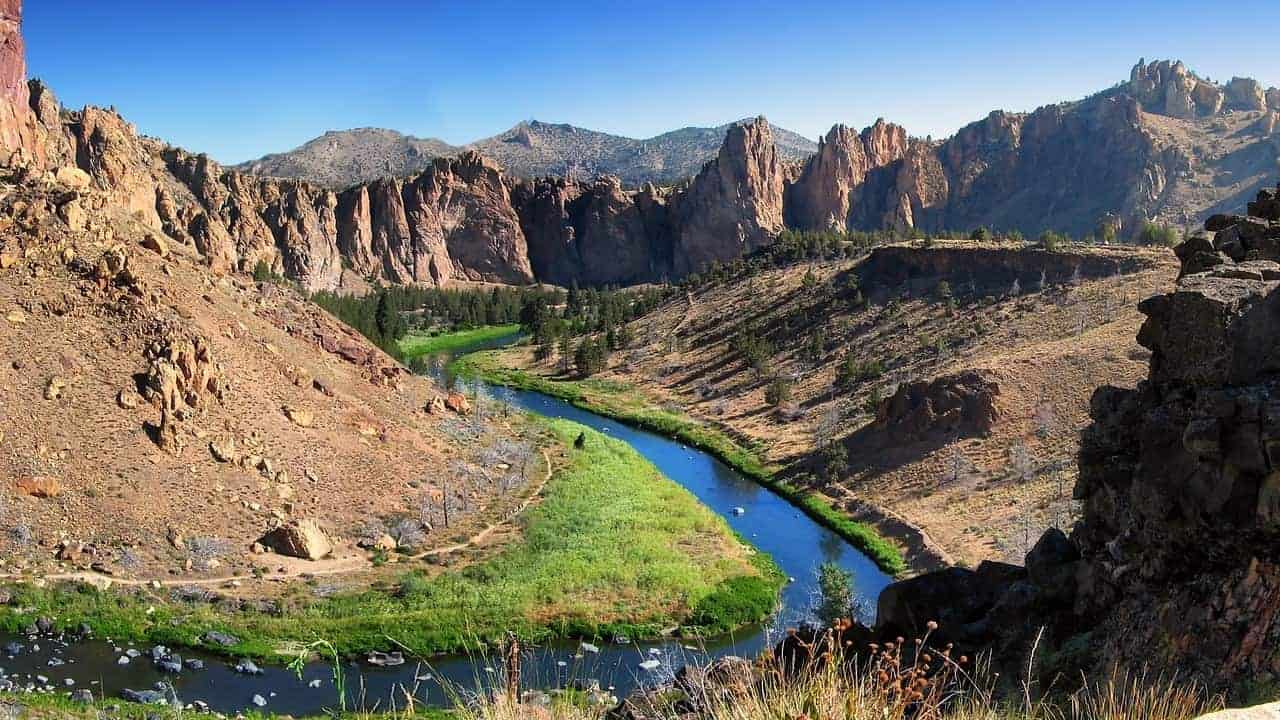In this article, we talk about the best free dispersed camping spots in Oregon. We have also prepared lots of maps, directions, links to sites, and all the detailed information you might need.
Whether you like scenic views of the shoreline or fancy exploring one of many ghost towns in this state, you will never run out of things to do if you’re in Oregon.
Thanks to its diverse terrain, Oregon has always been one of the most beloved camping places in the United States.
Map of Dispersed Camping Areas in Oregon
You can easily find the locations of the best dispersed campgrounds in the state using this map.
Overview
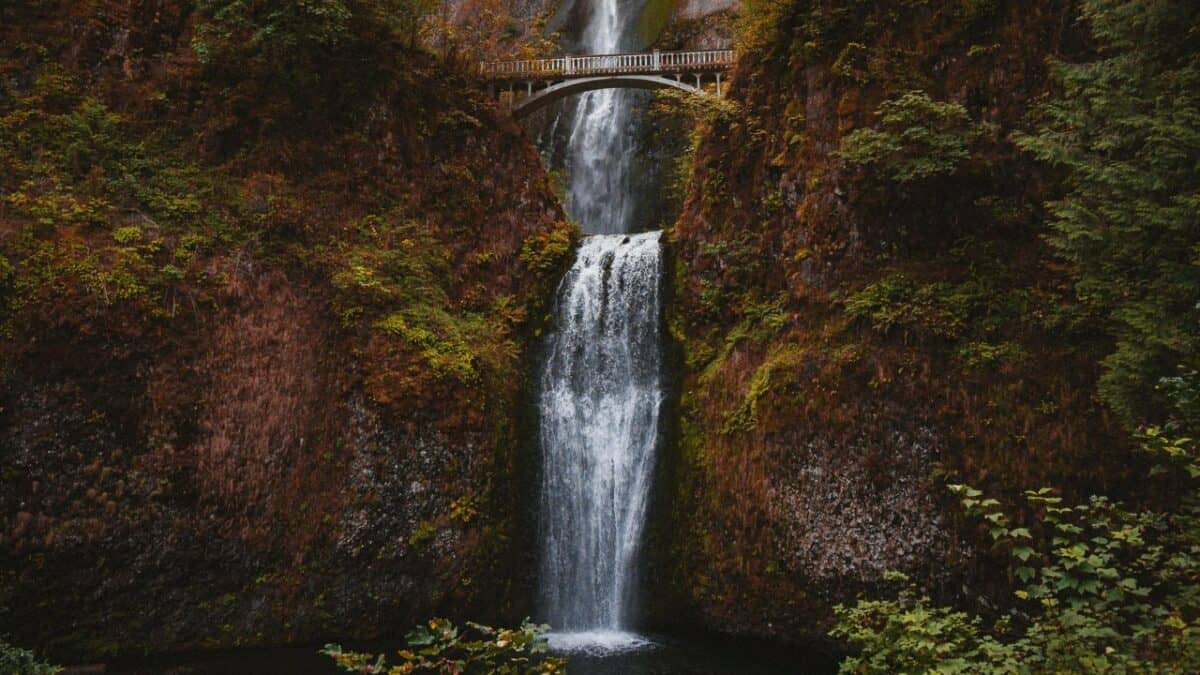
Oregon’s the proud owner of several first-spot titles among the US states in many different disciplines, such as having a two-sided flag. Also, it’s the home to the world’s most immense cheese factory, and being the only US state with an official nut called ‘Filbert,’ Oregon certainly doesn’t lack any historical charm.
Besides its rich history, this place is home to some of the prettiest dispersed camping spots you’ll find anywhere in the world.
From crystal clear lakes to long shorelines with small rocks and scattered old lighthouses, and enchanting National forests, no matter what your preferred camping setting – you’re surely going to find it in Oregon.
It has a long coast with an oceanic climate and plenty of spots where you can pitch your tent, park your RV, and enjoy the sights around you. It also has plenty of forest-covered territories, where you can experience pitching tents in a closed-off area surrounded by evergreen trees and a fire circle in the middle.
Also, if you like fishing, you will love the deep rivers with beautiful gorges where you can catch red band trout and salmon and spots dispersed throughout the coast where you can get your nets full of rockfish and halibut.
Best Dispersed Camping in Oregon
For a lucky camper looking to find cool spots to put on their bucket list, the only problem with Oregon’s vast territory is that there are so many beautiful spots to visit that you’d struggle to pick just one site. The beauty around you will constantly draw your attention.
Here, I’ve listed some of our favorite camping spots. Of course, there’s a myriad of other excellent sites that you can check out, but the ones below are a fantastic place to start acquainting yourself with the rich roster of campgrounds in Oregon.
Oregon Coast
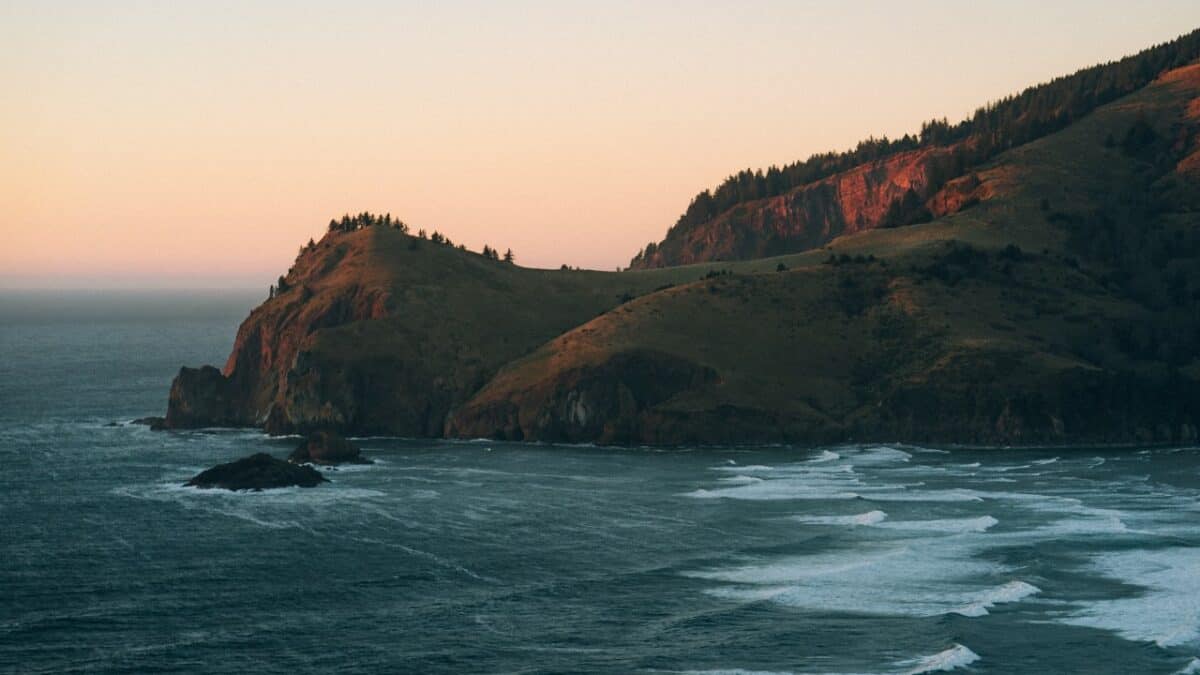
Representing one of the more fascinating parts of the United States, the coast of Oregon is as wild and unpredictable but also tranquil and mysterious – depending on what part of it you visit and when. During the winter, the storms that form due to the clash between the cold and humid oceanic climate and semi-oceanic coastal climate with hot and dry summers are the stuff of legends.
Many people arrive here to watch the storms and take pictures of the incredible ways the giant waves collapse on the cliffs.
The rich coastal fauna is another reason why many tourists flock to this area. Whale-watching is an activity you cannot do in many places in the US, and Oregon offers you this luxury. Observing the many brightly-coloured migratory birds can be an excellent opportunity to take some Discovery channel-worthy nature photos.
Most notably, the Oregon coast abounds with fantastic dispersed camping sites.
Whether you like dunes, mysterious forest paths just a couple of miles away from the Pacific, or camping near the scenic river and lively creeks, Oregon’s coast has it all.
Some of the best camping areas here include Siltcoos Lake, the Elko area just south of the Rogue River, or some forest path pullouts in Tillamook State Forest.
If you want to read in more detail about Oregon’s Coast, you can check out my Oregon Coast dispersed camping guide.
Sparks Lake Dispersed Camping
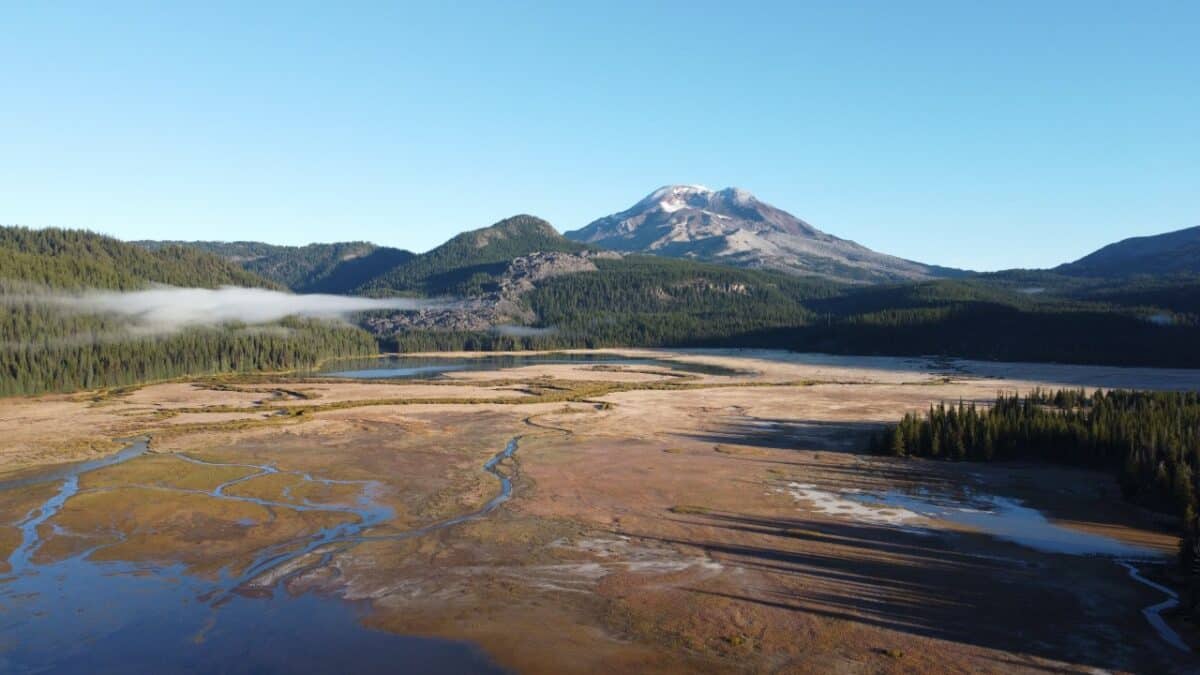
- Map
- Toilets: no
- Visitor Frequency: busy
- Water Availability: no
Located just outside of Bend, Oregon’s largest settlement east of the Cascades, the Sparks Lake area represents a genuinely great camping hub that is not only fantastic in itself but also a short drive away from other points of interest in the area.
For example, if you’re keen to take a slight detour from Sparks Lake and follow the Cascade Lakes Scenic Byway, set up a tent, or park your RV in one of the many dirt road pullouts near Sparks Lake.
As far as free dispersed camping spots in this area are concerned, you have to keep in mind that there is no potable water source and no toilets around. You can try filtering the lake water, but carrying your stock of bottled water is always a good idea and is, of course, a much safer option.
You have a USFS forest road that gets you there, and while you could get to some of the places with a large RV rig, due to the size of the pullouts, these spots are best suited for smaller RV’s and tent camping.
Last but not least, to get the most out of the experience of setting up a camp near a lake, you might want to bring a hammock for when the weather is nice and a kayak to get to know the lake itself better. (And potentially snap some incredible photos along the way, too.)
Mt Ashland Campground
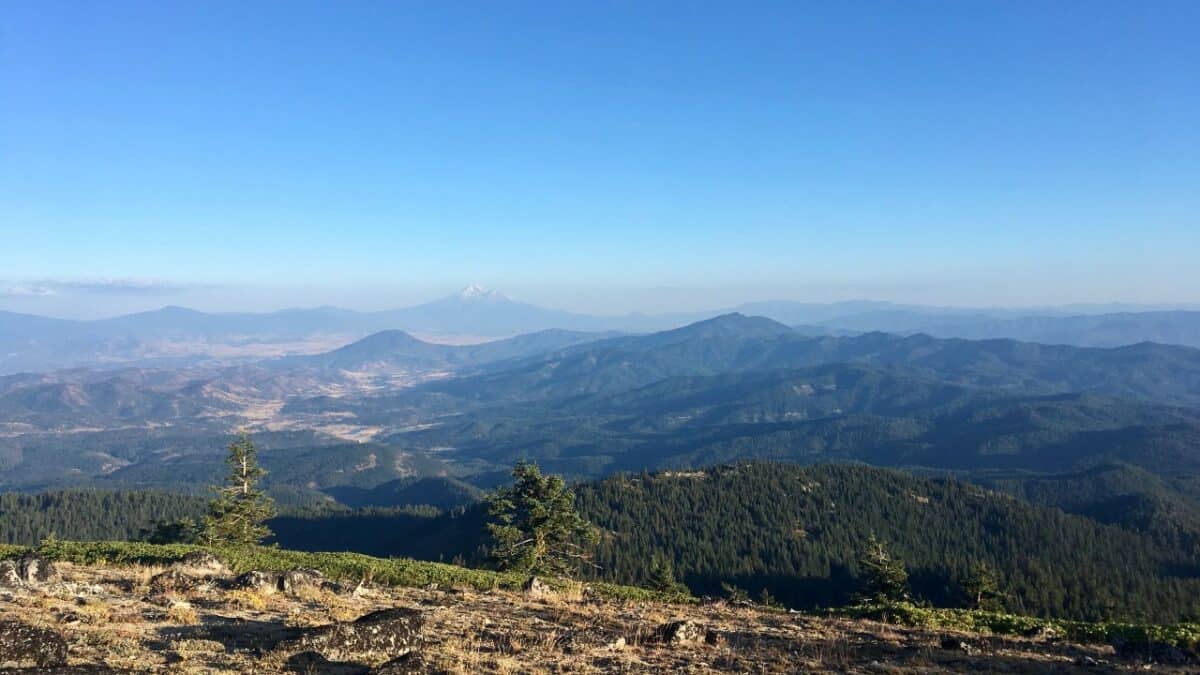
- Map
- Toilets: vault toilets
- Visitor Frequency: moderate
- Water Availability: no
On Oregon’s southern border, you will find a camping ground in the scenic Klamath National Forest. The Mt. Ashland campground is a fantastic dispersed camping setting where you will find a couple of natural wonders to enjoy and possibly take photos of, too.
Interestingly, from some of the campsites on Mt. Ashland, you can find a clear view of another beautiful mountain – Mt. Shasta, which is in northern California. On that note, you may want to check out our guide to free dispersed camping in California as well.
As far as the amenities go, you can count on picnic tables and vault toilets, which makes waste disposal reasonably easy. At the same time, consider that there is no potable water source here, so bringing your clean water is necessary.
Regarding the spaciousness of the individual campsites, the rule of thumb for the area around Mt. Ashland is to approach it with smaller vehicles and bring a tent rather than a large RV. While the sites aren’t that small, you will probably have a tough time finding the perfect place to park and camp among the winding forest paths representing the traffic lifelines in these parts.
Last but not least, this series of mountainous campsites are also quite close to the famous Pacific Crest Trail, which spans most of the western US coastal area, so you can easily take a detour to enjoy some of the local hiking and horse-riding trails.
Owyhee River Free Camping
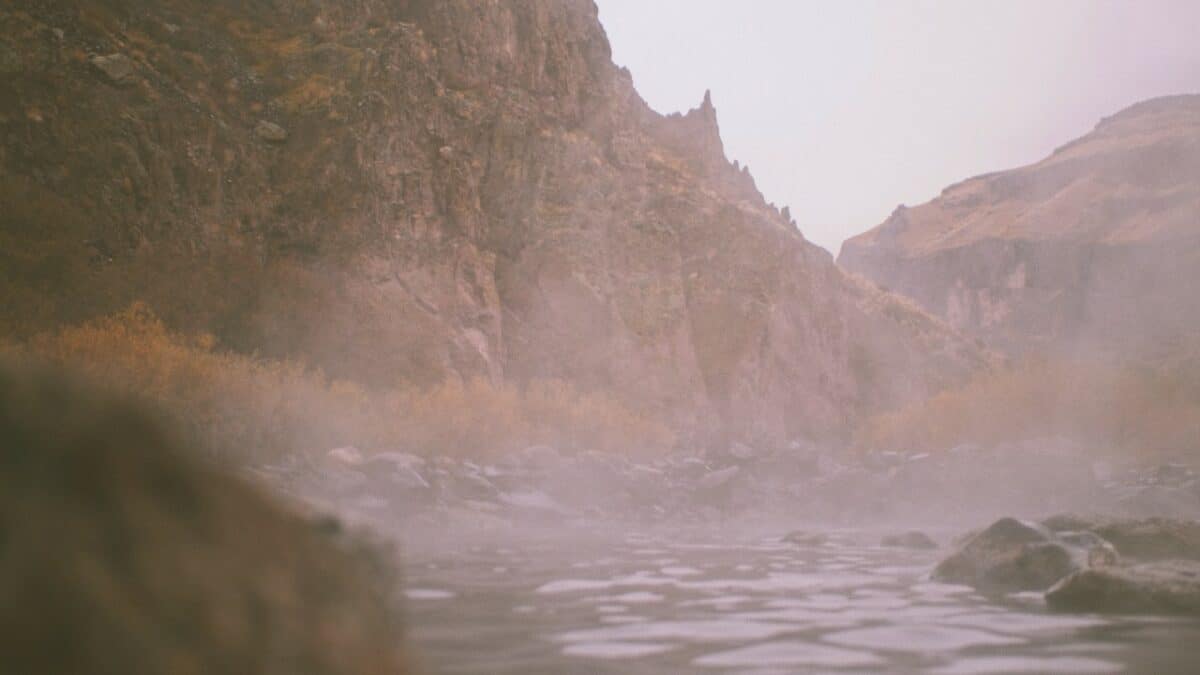
- Map
- Toilets: no
- Visitor Frequency: moderate
- Water Availability: no
The Owyhee River dispersed camping area represents the perfect example of just how diverse and versatile the state of Oregon is regarding its natural wonders and tourist attractions.
Oregon’s beautiful Pacific coastline draws the most attention to the large bodies of water this state boasts. One thing is also true – you can find dispersed camping spots along the Owyhee river that will show you a side of Oregon that you will grow to love.
Located on Oregon’s eastern border, this series of camping spots roughly follows the flow of the river Owyhee, which connects with Owyhee Lake – itself a significant camping attraction.
A great piece of news for anyone willing to get to know this entire area is visiting the Owyhee State Park, where you can enjoy a myriad of activities, including fishing, wildlife-viewing, photographing, and picnicking, with the help of many different amenities such as restrooms, dump stations, cabins, and viewpoints.
The great thing about camping along the Owyhee river is the free space. Whether you’re an RV full-timer, you like elaborate trailers or large tents – you can rest assured there’s more than enough space for all of it on the banks of the river Owyhee.
Tillamook State Forest
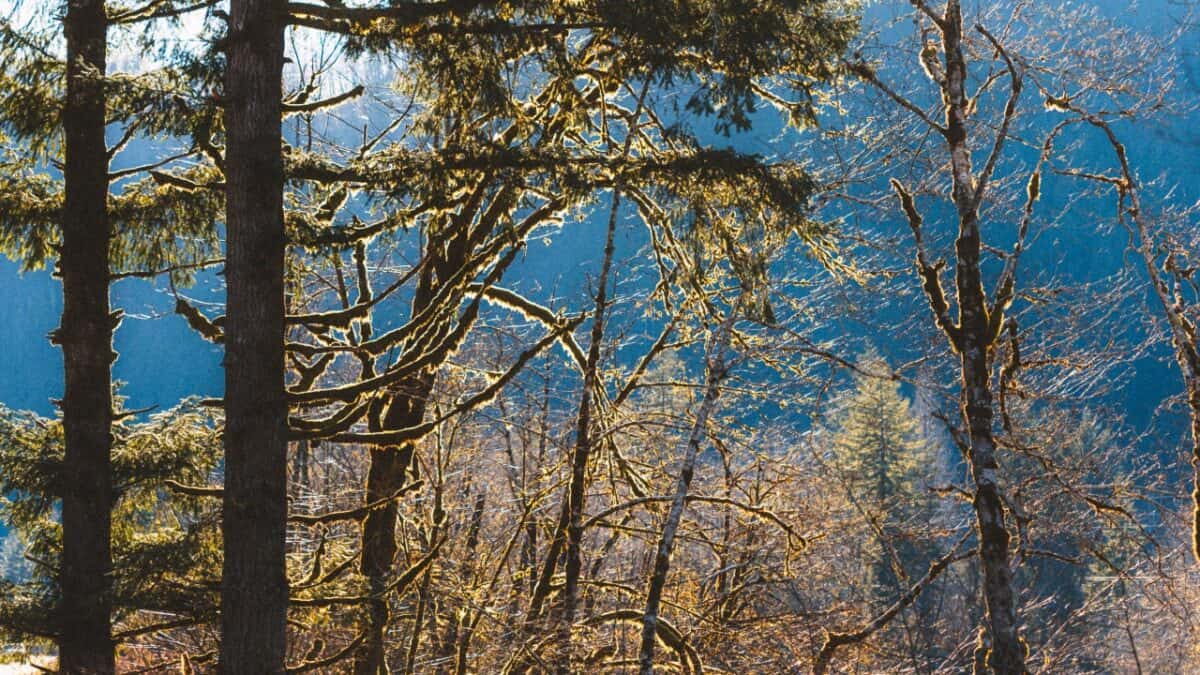
- Map
- Toilets: no
- Visitor Frequency: busy
- Water Availability: no (you can fetch some from any of the nearby rivers, however)
Tillamook State Forest is quite close to the Pacific Ocean, so you get the best of both worlds by visiting this place as a camper. It offers a fantastic ocean view, evergreen trees, fire circles, and that unique atmosphere that you can only get sleeping in a tent in the middle of nowhere.
As if that wasn’t an attractive enough deal for someone interested in Oregon camping, there are plenty of excellent spots along the Nehalem river and the Cook Creek Road. The Nehalem river itself, in particular, offers some of the best salmon fishing in the US, so it’s a must-visit for an avid fisherman.
One important thing to mention here, though, is that this state forest is affected by wildfires and floods periodically, so be sure to check the current state of this area by contacting the local authorities. A brilliant place to start your search would be the Tillamook Forest Center – there, you can find all the latest updates on any potential closure information, programs, and seasonal events.
Forest Service Road 960
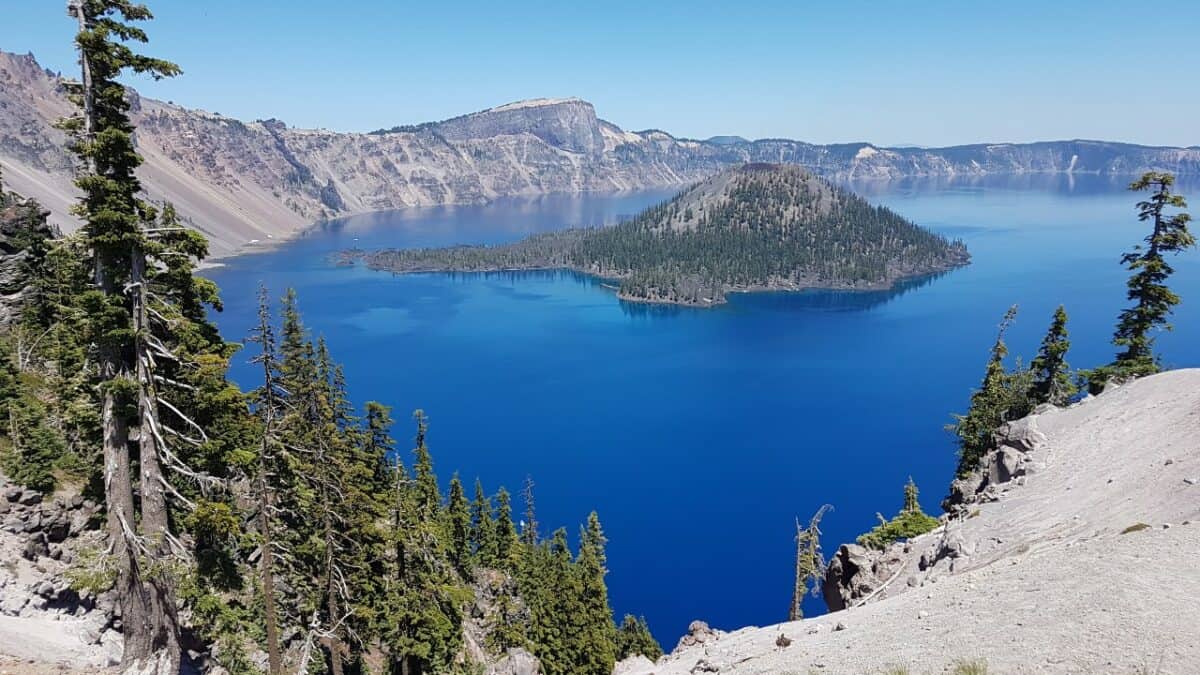
- Map
- Toilets: no
- Visitor Frequency: busy
- Water Availability: no
Close to the deepest lake in the US and one of the most tranquil and beautiful bodies of water anywhere in the world, Forest Service Road 960 runs past Crater Lake and goes through Umpqua National Forest. (Hence the rather technical name of this camping area.)
The thing to pay attention to in this camping area is that the sites here are typically quite busy on weekends during the summer. Still, if you manage to get here on time, you can find a decent camping spot relatively quickly.
If you plan to camp here in a larger vehicle, such as a big RV rig, what you may want to do is prepare to camp closer to the highway. This way, you can rest assured you won’t get stuck in the progressively more narrow roads that lead further into the Umpqua forest.
Camping here has the added benefit of easy access to the Crater Lake National Park – a large area where you can get on ziplines, stay at lake lodge houses, bike, hike, and trek to your heart’s content.
Painted Hills Dispersed Camping
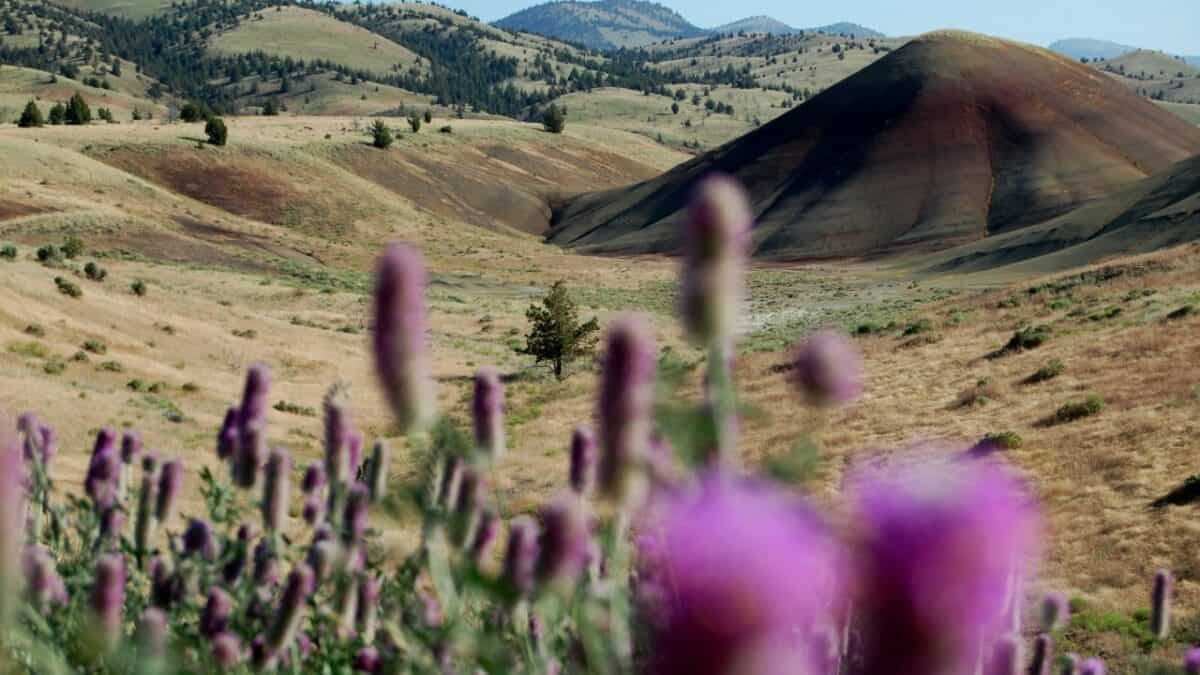
- Map
- Toilets: no
- Visitor Frequency: light
- Water Availability: no
Whether you’re into geography or archeology or are just looking for a scenic place to pitch your tent, take photos, and have a fantastic camping experience – Painted Hills can be just the place for you.
Painted Hills represent a group of hillocks that feature a beautiful reddish color with subtle nuances of tan, amber, orange, and black interspersed in some layers. Due to the historical and geological significance of this hill formation, the Oregon authorities made this area a National Monument of Oregon.
The entire area around this monument is perfect for camping, although you might have the best experience along Bridge Creek. The vicinity of water can help you cool down on a hot summer’s day, and pitching a tent here can also be a great way to have a mini Nat Geo-worthy photography expedition to the surrounding area.
So, if you fancy getting to know some of Oregon’s rich native and geological history but also have a blast of a camping experience, setting your tent in the vicinity of the John Day Fossil Beds National Monument is an absolute must.
For more great camping spots in the US, read our guide to primitive camping in Georgia and our guide to Minnesota dispersed camping.
How to Find Dispersed Camping Spots in Oregon
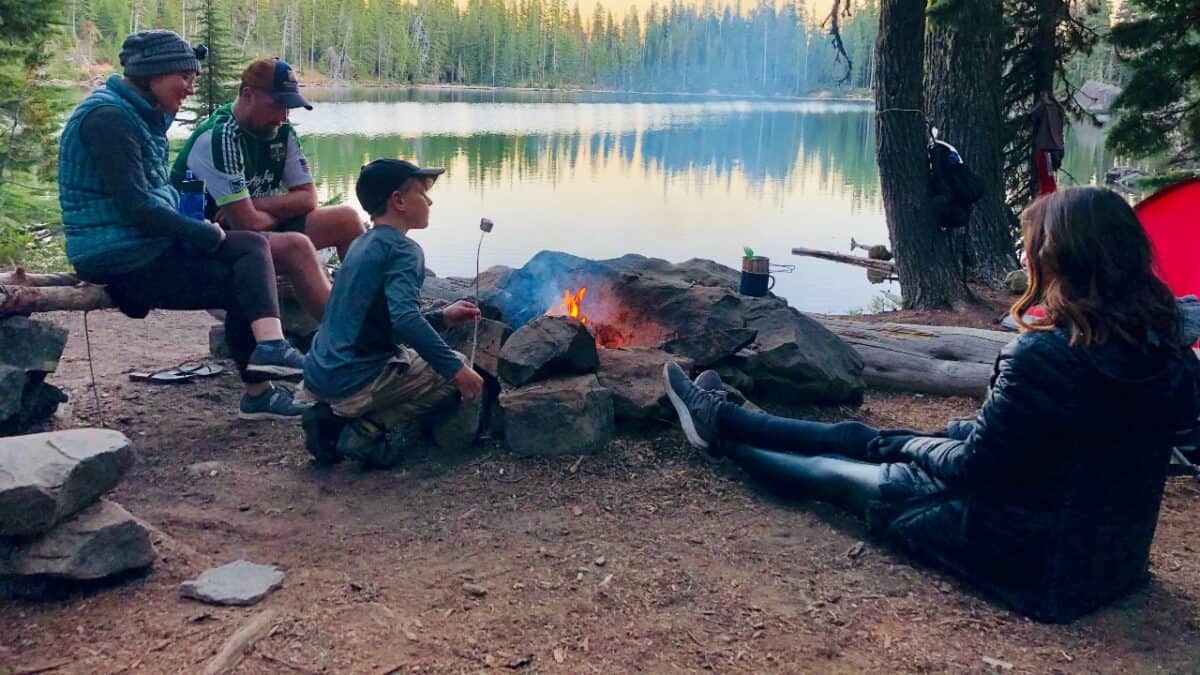
We strongly recommend contacting the local offices of either BLM or USFS (or ODF, in this case) to find out in detail about the camping conditions of an area you want to visit. Yet, looking up a good camping spot online can certainly be a great place to start your search for the perfect camping spot.
These are three dispersed camping apps that are the best, in our opinion, for finding dispersed camping spots:
· Freecampsites.net – Featuring a relatively simple interface with a large interactive map, Freecampsites.net is an easy-to-use campsite search engine
that comes with some quite valuable filters. These include the road types that take you to the campsite (4×4-only, paved, dirt, gravel). Also, you can engage in amenities such as potable water, toilets, picnic tables, and activities (fishing, horseback riding, hunting, wildlife viewing, swimming, etc.).
· Campendium – Based mainly on user reviews, this app leverages the experience of previous visitors to put new camping spots on a map and describe and rate them. A perfect resource for finding out more about the conditions and amenities of camping areas you’re interested in. (This app is predominantly dedicated to RV campers, by the way.)
· TheDyrt – An advanced camping app with a beautiful interface and plenty of recorded camping spots, complete with user reviews and photos. TheDyrt can be an excellent app for finding dispersed and developed campgrounds and specialized glamping resorts.
Where Can You Camp in Oregon?
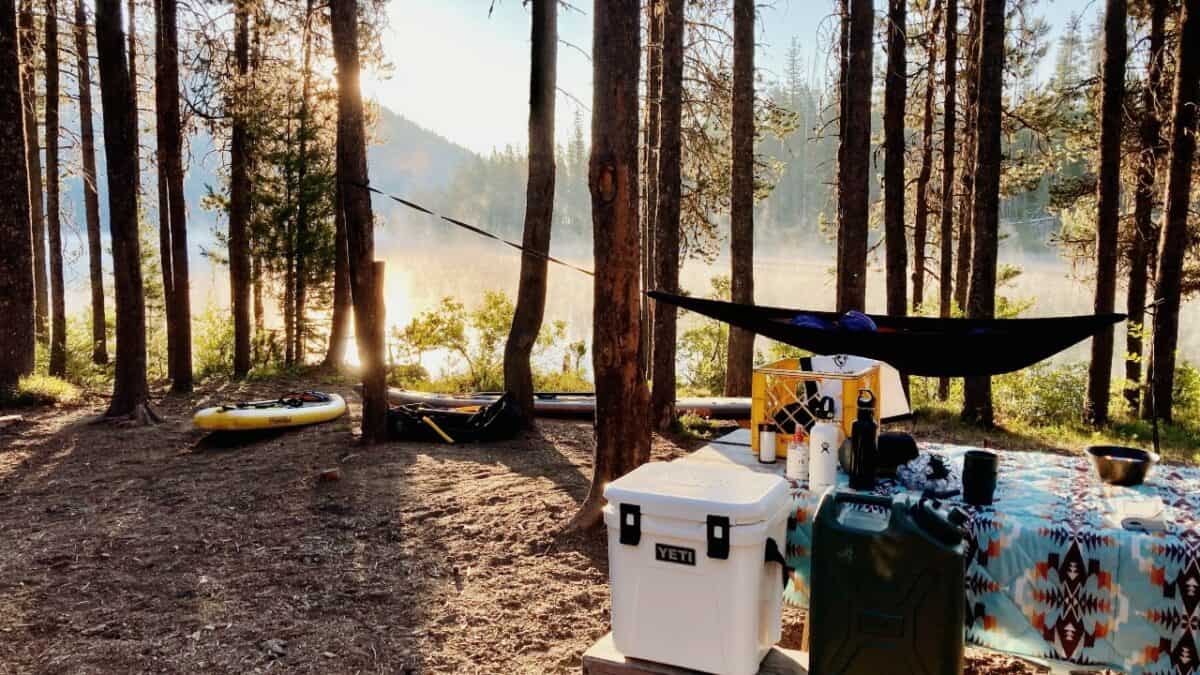
First, let’s look at the different Oregon authorities in charge of camping. Three organizations oversee the land you can camp on in this US state – BLM, USFS, and Oregon State Forests.
While the main principles of dispersed camping are roughly the same for each patch of land overseen by these authorities, there are some slight variations that you might want to consider – especially seasonally. The forest areas in Oregon and elsewhere in the US tend to be prone to wildfires during the summer months, so camping rules can change depending on what season it is at the moment.
For this reason, it’s always the best idea to check the official website of the organization responsible for managing the camping land you’re considering going to or call the representatives at the local office.
Here are these two organizations explained in more detail:
BLM – Bureau of Land Management Free Campsites
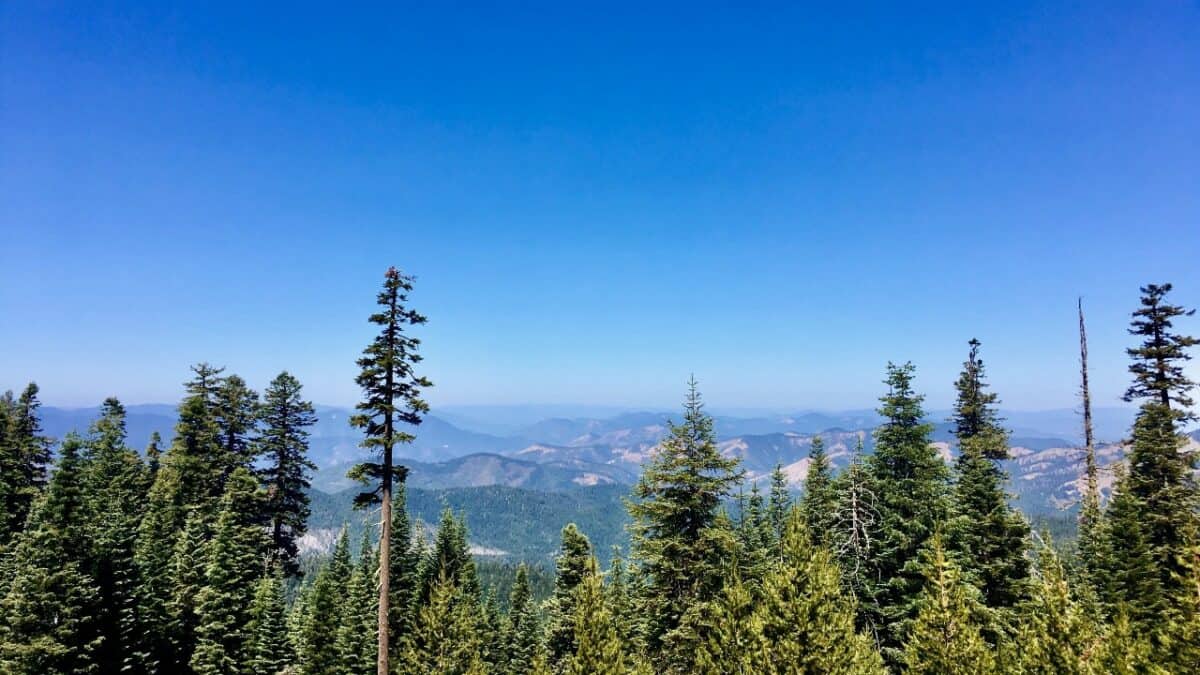
In charge of a vast expanse of land you can camp on throughout the US, the BLM is an organization you probably already came across if you have ever looked up dispersed camping spots in the US.
The BLM has its system of camping regulations that you want to acquaint yourself with before heading to an area this organization oversees. Here are some guidelines for camping on a BLM-managed camping area in Oregon (although this applies to other US states, as well):
· Developed campgrounds have their system of management with entrance fees and other rules.
· Most of the BLM-managed land not in use for developed campgrounds is free for dispersed camping (unless specified otherwise).
· Within one month, you can camp for 14 days at a single location. (You can stay for two weeks in bulk and then leave, or stay for a couple of days at a time to make 14 days within a month – The way you arrange these 14 days is up to you.)
· Campers cannot leave personal property unattended at a single camping location for more than ten days (This limitation is 12 months in Alaska).
You can find more information about BLM dispersed camping on their official website.
Depending on the season, or local events (such as construction, wildlife preservation programs, and other BLM official endeavors), the camping conditions and regulations may vary somewhat between different BLM offices. For this reason, checking with the local BLM office for more details before you head out is always a good idea.
Here is the list of BLM offices in Oregon with links to their official websites:
· Lakeview BLM District Office
· Northwest Oregon District Office
· Oregon-Washington State Office
You can also visit their official website to learn more about the 16.1 million acres of land overseen by Oregon/Washington BLM. And here you can read more about Washington dispersed camping areas.
USFS – United States Forest Service
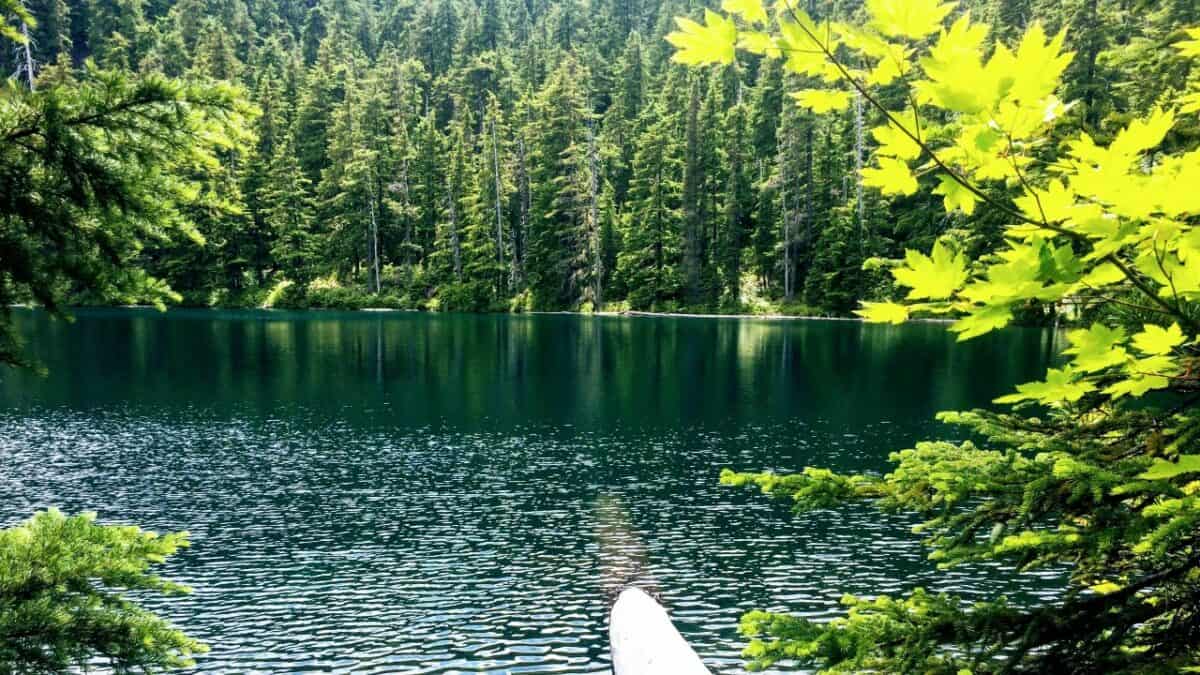
As far as forest regions in Oregon are concerned, ten of them have pretty much the same set of rules and regulations surrounding dispersed camping. That said, it’s always a good idea to check for updates in this regard by visiting the official website of the state forest in question.
In general, USFS websites for local forest offices offer valuable online camping details such as maps, pamphlets, updates on wildfires, wildlife preservation efforts, and other essential pieces of information.
Here’s the list of Oregon’s 10 National Forests with links to their official online premises:
· Wallowa-Whitman National Forest
· Fremont-Winema National Forest
· Deschutes & Ochoco National Forests
Free Dispersed Camping in Oregon State Forests
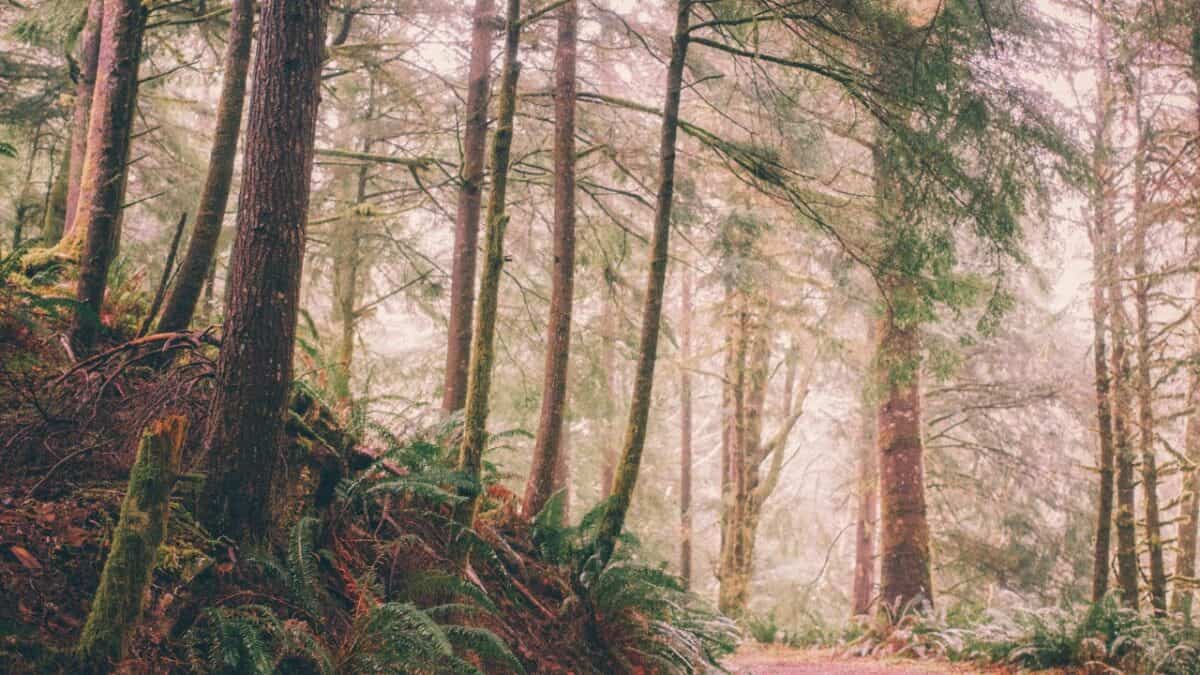
Generally speaking, the ODF land is free for dispersed camping, although, as always – checking with the local authorities beforehand is recommended.
Here are the five of Oregon’s state forests:
· Clatsop State Forest
· Santiam State Forest
· Gilchrist State Forest
· Sun Pass State Forest
· Tillamook State Forest
Here’s a helpful resource for finding out more about each of these individual forests in more detail. You will find maps, website links, fee information for developed campgrounds, and news.
Leave No Trace – 7 Principles of Camping
Whether you plan camping on a piece of land overseen by USFS or BLM, practicing the ‘Leave No Trace camping principles as a rule of thumb is always a great idea.
Even the folks at these official organizations often point to the seven principles of Leave No Trace as the go-to rules when camping on the territory they manage.
1) Plan Well-Ahead & Prepare – Be sure to do your homework and research the camping spots you’d like to visit before you head there.
Make sure that the area you’re interested in allows dispersed camping. Visit the local authority website (BLM or USFS, for example) to learn about the current state of the campsites and whether any new regulations have appeared.
2) Camp & Travel on Solid, Durable Surfaces – This one may sound like a no-brainer, but many folks forget that clearing an area of plants counts as changing the environment. When it comes to dispersed camping, you should avoid making new campsites, setting up fire circles, or otherwise camping on fragile surfaces that could easily crumble.
3) Practice Proper Waste Disposal – Whether human waste or pet droppings, if the area you’re camping at doesn’t have a vault toilet, you will have to pack your trash. Dispose of it correctly away from a water source or a camping ground with other campers nearby.
4) Leave Everything as It Was – Don’t try to add anything to the campsite, either. You might feel the temptation to build a picnic table at your camp or perhaps some impromptu chairs out of the branches strewn around, but for the sake of the environment and fellow campers – be sure not to. Also, don’t take anything away from the camping area, either.
5) Pay Close Attention to Campfires – Campfires that aren’t entirely out by the time the campers leave the camping spots are one of the leading causes of forest fires. For this reason, always keep your campfire within the fire circle and put it out entirely before you leave the campsite.
6) Respect the Local Wildlife – This means no hunting, befriending, feeding, or otherwise tampering with the local animals. If you’re bringing pets along, ensure the area is pet-friendly, and always keep your pet on a leash.
Also, you should pay special attention to storing food and beverages properly so that the local animals don’t get to them.
7) Be Considerate of Other Campers and Visitors – This especially goes for those campgrounds where campsites are tightly-knit. To ensure everyone has fun and a good time camping beside you, pack your trash before you leave and keep your noise levels down.
You can learn more about the Leave No Trace camping principles at the organization’s official website.
MVUMs (Motor Vehicle Use Maps) for Oregon National Forests
One of the main differences between the BLM and USFS is that the technicians at USFS make and publish specialized maps with roads for motor vehicles in the different forest areas.
So, if you’re an RV camper looking for exciting quad tracks, or a forest bike trail, these maps can be of great use to you. Here are MVUMs for each of Oregon’s 10 National Forests:
· Malheur National Forest MVUM
· Siuslaw National Forest MVUM
· Umatilla National Forest MVUM
· Wallowa-Whitman National Forest MVUM
· Willamette National Forest MVUM
· Klamath National Forest MVUM
· Mt. Hood National Forest MVUM
· Fremont-Winema National Forest MVUM
· Deschutes & Ochoco National Forests MVUM
Conclusion
Oregon is a curious mixture of tranquil and fierce – you can have a peaceful and relaxing picnic in the middle of a forest one day and then witness some of the most fascinating and turbulent oceanic storms along Oregon’s craggy and rocky coastline.
So, whether you like fishing, hiking, horseback riding, RV-ing, or even glamping – you can rest assured that Oregon will not leave you disappointed.

I love hiking, backpacking, and camping. From the Camino de Santiago to the West Highland Way in Scotland or simply a great day hike on the weekend. Hiking refreshes me, my mind, and keeps my body reasonably fit. So far I have walked three Camino routes and many other long distance hikes in the UK, Canada, and around the rest of Europe. One of the best was my hike up Ben Nevis.

